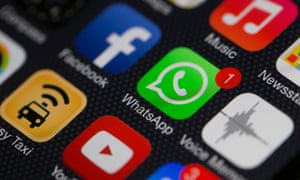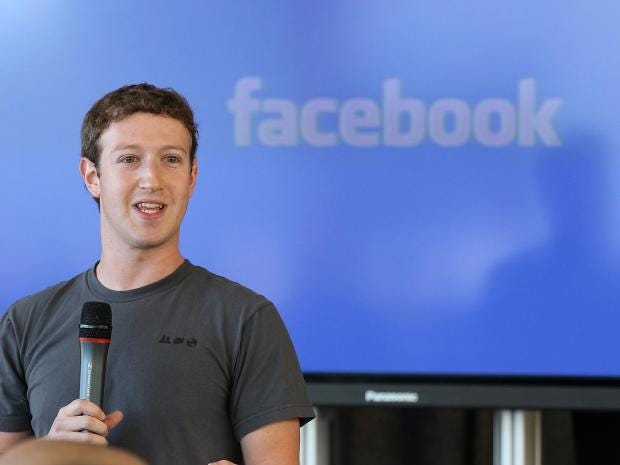Independent Case Study
The basics
Your chosen industry:
- Film Industry
Your chosen case study (i.e. text/institution etc.):
- Warner Bros
Have you received approval for this case study from your teacher? Yes/No
- Yes
Research and answer the following tasks on your MEST3 exam blog:
Audience
1) How has new and digital media changed the audience experience in your chosen industry?
It has opened doors for a more variety of content to be viewed by viewers. The internet and even Sky Box's have allowed for more greater proportion of content to be viewed as more films and programmes are at their finger tips than ever before.
2) Has new and digital media changed the way the audience consume your chosen product?
Yes. It has allowed for content that predominately have an upfront cost, however has been streamed or uploaded on the internet via piracy. It has allowed for more people to use the internet as means of gaining access to content that should be paid for.
3) Has the size of the audience changed as a result of new and digital media?
There have been fewer audiences going to the theatres to watch movies as they know that it will be released on pirated websites. This in turn will result in fewer box office revenue as less audience members will come to see the film during its release.
4) What are the positive changes new and digital media have brought to the audience of your case study? (E.g. greater choice, easier access etc.)
There is greater choice of content that ranges from different age classifications and genres. For example, Sky Box has allowed over 1000+ channels to be aired on their device, giving the audience member unlimited access to so much content rather than the standard 5 channels that TV had back in the days.
5) What are the negative changes new and digital media have had on your chosen audience? (E.g. quality of product etc.)
The quality of the product remains the same, however it is rather the income made from the products after release that are the problem. The idea of pirate websites and shareable sites acts as a major harm to the industry as individuals can share files that are usually meant to be paid for, and sharing it on a global scale for free. This in turn, leaves the institution to make no money at all as they are not receiving any money from the actual source that the content in available on ie, DVD's.
The quality of the product remains the same, however it is rather the income made from the products after release that are the problem. The idea of pirate websites and shareable sites acts as a major harm to the industry as individuals can share files that are usually meant to be paid for, and sharing it on a global scale for free. This in turn, leaves the institution to make no money at all as they are not receiving any money from the actual source that the content in available on ie, DVD's.
6) What about audience pleasures - have these changed as a result of new and digital media?
People are enjoying the fact that they don't have to spend a penny on watching a film by purchasing a film ticket. Moreover, it is to their convenience as they don't need to travel to the cinemas, or even book tickets as they can watch all they want on their computers which provides endless files and entertainment with just a click of a button.
7) What is the target audience for your chosen case study? Write a demographic/psychographic profile.
Warner Bro's have been making films for a long time, and have developed a lot of loyal customers. Due to the long establishment of this brand, it has clearly developed many fans that are of an older demographic. The demographic would tend to be a 50/50 gender split as Warner Bro's make films for both genders as well as being attracted by many people from different age groups. Warner Bro's own the rights to DC comics films, which mean that they have a demographic of teenagers from 13-40's+ as well as creating historical films which is largely to be associated with older generation who appreciate sophisticated style of film.
Institution
1) How has new and digital media had an impact on ownership or control in your chosen industry?
The fact that films and content is being given away without any money being given to the institution shows how control of the industry is at a minimal. The internet is such a vast platform that when a site gets shut down, there will be duplicates replacing them. For example, when Kickass Torrents was shit down, mirror sites was published to continue to workflow and use of their site to the users. Furthermore, the one upside is, is that such sites don't really care about who's content it is, they don't delete their brand name from their content. Therefore, Warner Bro's will still get the recognition for their content.
2) What impact has new and digital media had on ownership in your chosen case study?
Although the content is under the name of the brand who has produced the content, the ownership of that content is lost. This is because once the content gets released for free, the institution will find it very difficult to get rid of all of these 'pirated' videos. Furthermore, people tend to spoil the film by recording major scenes within the film and posting them on YouTube, for example Vader's end scene in Rogue One, where Disney had to take action and create an algorithm to banned any content that would spoil the movie. This shows that institutions do have authority to some degree as they are working to get their content and rights back from those who have taken it without consultation, however it is not enough to completely stop it as once a file is on the internet, it cannot be deleted completely due to the digital footprint that it leaves.
3) How has new and digital media changed the way institutions produce texts?
Before a film is played in theatres, there will be a warning screen where it will state that 'CCTV is in operation' which shows how much security for these types of things are. Even the DVD version of the film will also have a warning display stating that the film cannot be copied on to a separate disk. So, although new and digital technology has created problems for these institutions, it has also opened up doors for them to challenge those who take away their content by publicising their punishment in doing so, for example the CCTV method.
4) How has new and digital media changed the way institutions distribute their product?
Due to the on going trend of streaming a film rather than buying a hard copy of it, institutions have decided to partner with TV providers such as Virgin Media and Sky, to create a 'pre-order' option for when a film will be released after cinemas. This shows how institutions are taking advantage of the modern trend of streaming content and shows how the distribution methods have opened.
5) How might new and digital media threaten your chosen industry?
The internet's ability to share content with one another has essentially given way to content that should be paid for, go for free. This negatively affects the industry and no revenue will be returned to them as people are viewing content that they should be paying for.
UGC
1) What examples of user-generated content can you find in your case study?
Film festivals are something that embraces user generated content for this industry. It allows people from different backgrounds and ages to create their own films.
2) How has UGC changed things for audiences or institutions in your chosen case study?
People can now ex;press their creativity which opens doors to wider content being generated as fan theories and ideas can make their ways in to movies. Moreover, short films that people make can tend to become a fully fledged film with a high budget for example, Wiplash
Marxism & Pluralism
1) What would be a Marxist perspective of the impact of new and digital media on your chosen case study?
A Marxist would believe that the institutions such as Warner Bro's are trying to produce content they know audience want to consume, rather than actually viewing it from an audience perspective. In addition, people would also argue the favour of white male workers being more in the industry than other ethnicity.
2) How would a pluralist view the impact of new and digital media in your chosen industry?
A pluralist would believe that people have the right to view content that are of great value to them and shouldn't have a price tag on them.
Globalisation
1) How has globalisation impacted on your chosen industry or case study?
Being able to show highly technical and professional films to the world has sparked many interest in people who aspire to do the same. Especially eastern countries, where films aren't made to a professional standard, and Hollywood can help deliver that gap in the market, to provide high quality entertainment.
2) In your opinion, has globalisation had a positive or negative impact on your chosen industry and case study? Why?
3) Can you find examples of cultural imperialism in your case study or industry? (The 'Americanisation' of the world)
Films such as American sniper patronise America's dominance and presents them as heroes of the narrative. Many of their films take place in the country, which glamorise their country to gain more attraction and more interest from viewers. In addition, culture and values that are expressed through films are also mimicked in real life where viewers want to adopt the lifestyle presented before them.
Social media
1) How has your industry or case study used social media to promote its products?
- Social media networks such as Facebook and Instagram have heavily been used as a way for institutions to promote their products. This is because advertisement will make its way to people who share a similar interest in that type of movie (kind of lie cookies), and are more likely to go watch the film. Furthermore, the cast members who are on social media, post set photos as well as promote the film themselves which is even more powerful than the institution doing it.
2) Provide examples of how your case study has used social media and explain the impact this would have on audiences.
- Examples include, a never before seen scene from the movie- generally used to generate 'hype' and excitement
- A famous tactic used is that once the user sees the advert, it will begin to play without the user clicking on it, this will essentially alert the user to go and see the video playing and possibly be interested in viewing it in the cinemas.
3) Is social media an opportunity or a threat to your industry and case study?
- Advertisement is more of an opportunity to my chosen industry because it allows wider audience base to be reached as well as promote the product in a unique and vast way. Using websites, or competitions are all things that social media can help create a strong fan base and audience viewership/loyal customers.
Statistics
1) What statistics can you find to illustrate the impact new and digital media has had on your industry or case study?
- Netflix makes $200 million a year off streaming service ONLY
- Online piracy costs the US $200 billion a year
2) Looking at these statistics, what impact has new/digital media had on institutions in your chosen industry?
It clearly shows how the new and digital media platform has created a new way for films and entertainment to be consumed via stream. However, the next point shows how much money is lost from the American economy from piracy alone. $200 billion is lost due to piracy of any form of content and this shows how detrimental such act is to both the industry and the country.
3) What has the impact been for audiences? These may be positive and negative.
Netflix has taken advantage of this trend and has officially and fully become the new form of TV consumption. People tend to watch videos on the go which is what Netflix provides. On the other hand, people having the ability to view content for free without having to pay for it will give them a positive feeling because they 'save' money as well as being entertained.
Theories
1) What media theories can you apply to your chosen industry and case study? Select THREE media theories and explain how they are relevant to your case study. Note: these can be ANY of the theories we have learned over the whole of Year 12 and 13.
- Regulation
Issues/debates
1) What media issues and debates can you apply to your chosen industry and case study? Select THREE media issues/debates and explain how they are relevant to your case study.
- White washing
- Female actresses pay
- Piracy
Wider examples and secondary texts
1) What other texts or institutions are also relevant to your case study? What would be good secondary texts or examples to use to support the findings of your independent case study?
- Music industry
- Gaming industry








